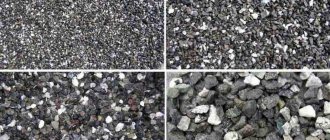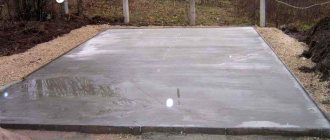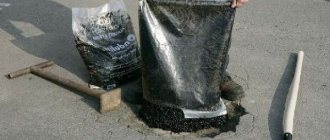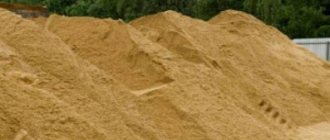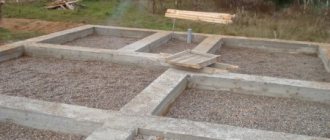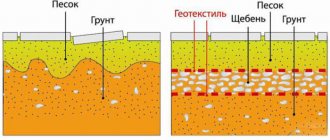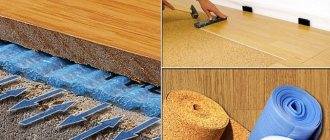Sawdust, as insulation, is used to protect various surfaces: floors, roofs, ceilings, walls. In any case, thermal insulation is laid in a layer of some thickness; this parameter depends on the climate of the area and the type of material of the supporting structure. To reduce heat loss, different types of sawdust are used. First of all, they differ in fraction size and properties. If you need to choose insulation for making a working mixture, consider each option, taking into account the pros and cons.
Features and types of sawdust
The material is a by-product of the wood processing industry. Sawdust as insulation can be used in two ways:
- rot;
- shavings.
Smaller fractions are obtained by sawing. The result of this process is dust or wood dust. This material has a high filling density and is easier to compact. The parameters of the dust directly depend on the characteristics of the working tool (saw). The shavings differ in the size of the fractions - in this case they are larger (from 5 mm to 5 cm). This material is obtained by processing wood in several ways: drilling, planing.
Sawdust insulation is carried out using shavings from different types of wood:
- spruce;
- pine;
- oak;
- ash.
The cost of the material is low, which is due to the method of its production. Despite this, sawdust is still often used for a variety of purposes. The high popularity of the chips is explained by a large number of positive qualities, including excellent heat and sound insulation. However, we must not forget that this material is hygroscopic. For this reason, when choosing sawdust insulation, the type of wood is taken into account.
For example, oak fractions resist moisture better than others . This means that the material will not lose its properties upon contact with liquid.
Spruce, pine and ash are more susceptible to moisture. When choosing shavings to insulate an object, different thermal insulation technologies are considered:
- the use of carpentry waste in its pure form is the most suitable method, since in this case well-dried shavings are used, but in the process a lot of dust is generated, which contributes to the deterioration of the properties of the material;
- wood blocks - made from sawdust, copper sulfate and cement, this option is suitable for insulating a facility during construction, it is not used for the purpose of thermal insulation of houses that have already been put into operation;
- sawdust-based granules - contain carboxycellulose glue, antiseptic compounds and fire retardants, this material is an improved version of shavings, as it is characterized by excellent fire resistance;
- sawdust concrete – contains cement, sand, water and wood shavings;
- wood concrete - this material consists of sawdust, organic fillers and cement.
Insulating walls with sawdust: pros and cons
, wood waste from hardwood , namely ash, spruce, pine, etc., is most often
For this purpose, oak sawdust is considered the most suitable option. These raw materials are expensive, but they help preserve heat in the house even in 30 degree frost.
The best option is pine shavings - it contains resin that repels rodents and bugs.
It is best to take sawdust of the medium fraction, since small ones will produce a lot of dust, and large ones will have little effect.
NOTE!
The sawdust should not contain any third-party aromas or elements. Wood processing waste must be chamber dried. It is advisable to dry shavings that have natural moisture in the fresh air . Without pre-treating the material with an antiseptic, it cannot be used.
After the sawdust is completely dry, it is worth adding a mixture of copper sulfate and slaked lime (10% by weight).
Insulating external walls with sawdust has its advantages:
- it is easy to work with;
- getting sawdust will not be difficult for you. There are wood processing enterprises in many localities;
- long service life;
- high efficiency;
- environmental Safety;
- low specific gravity;
- excellent noise-absorbing and heat-insulating properties;
- This product can be purchased at the sawmill for free or for a nominal fee.
Thermal insulation device
Disadvantages of the material:
- The insulating layer is of considerable thickness . If the sawdust layer is small, then their effectiveness as insulation will be minimized;
- high fire hazard of the material . Wood shavings readily burn. Using sawdust as insulation for walls greatly increases the likelihood of a fire occurring and spreading;
- the material is not resistant to moisture, it absorbs it well . As soon as liquid gets on the insulating layer, it is fraught with negative consequences: dampness, mold will appear, and harmful insects will appear.
Therefore, if you decide to install such a structure, you need to pay special attention to vapor and waterproofing . If these layers are made without following the technology, the insulation will quickly become unusable. To prevent sawdust from being exposed to moisture, they are treated with special reagents.
But the cost of such material becomes many times higher, and it also becomes toxic and can even cause an allergic reaction. It is not safe to use processed sawdust as a thermal insulation material in a residential frame house.
Insulation of walls with sawdust and lime
In order to make wall insulation, which includes lime and sawdust, you need to take these ingredients in a ratio of 1:10 . You need to add a little antiseptic solution (25g per 1 bucket) to the prepared mixture.
Then the mixture must be poured into the walls and compacted. Sawdust treated in this way does not sag and bugs do not grow in them.
Sawdust with lime
Sawdust with straw
Straw is an excellent material for wall insulation. For these purposes, you can use straw from barley, oats, rye, and wheat. It is first pressed and then tied with wire, cord or mesh. Straw insulation has a density of 90 – 125 kg/m3; as a rule, straw “slabs” are plastered on top.
The advantage of straw is that it breathes. Minus - it ignites quickly and burns well . To prevent this from happening, it is treated with fire retardants.
Sawdust with straw
How to make sawdust with clay
If you use sawdust as a base, you can prepare a solution for plaster. To do this, you should mix sawdust with water, cement, clay and newspapers.
A composition obtained from clay and sawdust is used to plaster the walls inside the building. Slabs are sometimes made from such a solution, compacted and dried well. The resulting sheets are used as thermal insulation material.
Sawdust with clay
Advantages and disadvantages
If you are choosing insulation, information about thermal insulation alone is not enough - the pros and cons should also be taken into account, since the service life of the material depends on whether the chips meet the operating conditions. Positive traits:
- environmental friendliness;
- low thermal conductivity;
- soundproofing;
- acceptable price;
- simple installation technology;
- if the material is treated with fire retardants and antiseptics, the service life of the sawdust is extended.
Disadvantages include susceptibility to fire, hygroscopicity, and labor-intensive installation. The method of laying insulation itself is simple and does not require special skills or experience. However, this work takes a lot of time. In addition, wood shavings are susceptible to rotting, and rodents can build nests in them. Insects also live in sawdust. In addition, over time, this material dries out, which means it loses some of its properties. To eliminate the shortcomings, sawdust is mixed with clay, cement, lime or copper sulfate . This improves the properties of the material.
How to choose the right sawdust?
When choosing a material, the quality of sawdust depends on its cost. That is, sawdust can be made from toxic trees, and their price is much lower. When purchasing sawdust, you must ask the company for documentation on the material, so you can be sure of its environmental friendliness.
To insulate a house, you need to choose sawdust of the average type. If the sawdust is large, then it loses some of its thermal insulation properties, and if the material is too small, it becomes inconvenient to work with, as it produces a lot of dust and can fly apart.
If materials with natural moisture are purchased, they must first be dried. To insulate a living space, it is better to use sawdust from coniferous wood; they contain resin and repel rodents and pests. In order to insulate a bathhouse, you can use sawdust from deciduous trees; they are mixed with ash or lime, otherwise they will rot.
Before use, the material is aged for six months to a year so that the substances in the sawdust that contribute to rotting are reduced. Sawdust should not contain debris or other inclusions, so they can be sifted through a construction sieve.
The use of sawdust and lime as insulation saves costs, since the cost of materials is not high. Sawdust has high heat-insulating and sound-proofing properties, but they cannot be used in its pure form, without impurities, as they are prone to rapid combustion. Thanks to the use of sawdust and lime in wet form, high-quality insulating blocks are obtained that are not subject to burning, rotting, and damage by rodents. Such materials can be used to insulate ceilings, walls, floors, roofs and attics.
Sawdust and lime as insulation
This method is more suitable for thermal insulation of walls and partitions. Prepare well-dried shavings. To prepare the mixture you will need lime. To make insulation from sawdust with your own hands, the ratio of these components is taken as a basis - 10:1. It is permissible to use gypsum instead of lime.
To protect wall insulation from insect invasion, an antiseptic in an amount of 25 g/bucket is added to the mixture of sawdust and lime. This measure allows you to avoid subsidence and damage to wood chips by pests. The finished mixture is placed in the space between the walls. It is recommended to compact the material using moderate force. You should not be too zealous, as the chips may lose some of their properties.
Using sawdust as insulation
Sawdust is an economical material, as it has a low cost; it is used as insulation for roofs, interfloor ceilings, floors, and ceilings. The composition of sawdust and lime is an environmentally friendly material, without the inclusion of synthetic additives, it has high sound and thermal insulation properties.
Lime is added to the composition for high-quality compaction and shrinkage of the material, and it also prevents the appearance of rodents. Sawdust is actively used as insulation for ceilings. Thanks to sawdust and lime, you can obtain high-quality insulation of walls and ceilings.
Sawdust with cement as insulation
Using lime and wood shavings, a material of increased strength is prepared. Cement is added to these components. If you need to know how much materials need to be used (their ratio, proportions), then the video will help you prepare the mixture correctly. The main feature of this technology is the thorough mixing of cement, sawdust, and lime. Thanks to this, the wood shavings will be well saturated with moisture in the future.
Components:
- 1 bucket of cement;
- 1 bucket of lime;
- 10 buckets of sawdust.
Prepare an antiseptic (25 g/bucket of water) and irrigate the bulk mixture. As a result, it should acquire sufficient density. You can check the readiness of the material by squeezing it in your fist. If the mixture retains its shape and no water is released, you can use sawdust with cement as insulation.
Blocks are made from the resulting material. Backfilling is carried out layer by layer. It will take 2 weeks for the insulation to dry completely. The blocks are then checked for voids. If any leaks remain, they are filled with the same mixture.
Sawdust insulation technology
Depending on the surface that needs to be insulated and other conditions, a layer of mortar of different thickness is used. If we take the average value, then for walls it will be a layer of about fifteen to twenty centimeters, for ceilings - up to thirty centimeters. For a floor around 20 cm, although of course a lot depends on the type of floor. If this is a frame house, and it is raised on screw piles so that the wind blows under the bottom of the house, then it is necessary to make the layer thicker. Naturally, the thickness of the layers also varies depending on the climatic characteristics of the region. In the Krasnodar Territory, the layer can be made smaller, but in the very north, it wouldn’t hurt to add more. In general, when it comes to insulation, and especially the ceiling/roof, it’s better to overdo it than to underdo it.
READ ALSO: Bitumen waterproofing: reliable, fast, profitable
It is recommended to do insulation in layers, compacting each layer. The mixture should dry within two to three weeks (depending on thickness). To speed up the process, you need to ventilate your home daily. Drying leads to slight sagging, so you will need to add a little more mixture.
Sometimes a composition containing shavings or sawdust, as well as clay, cement, newsprint and water, is used to plaster walls and ceilings. In addition, a material suitable for thermal insulation is prepared from it. The solution must be poured into molds in which the mixture will be pressed. The result is sheets that are excellent for insulating interior walls.
Sawdust concrete
This is a durable material whose composition resembles classic concrete, but fine sawdust and lime are added as fillers. The ratio of components may vary. The choice of option is made taking into account the requirements for the strength of the material. For example, to produce high-density sawdust concrete, you will need:
- 200 kg of cement;
- 200 kg of sawdust;
- 500 kg of sand;
- 50 kg of lime.
The number of components can be reduced/increased, but it is important to maintain the proportions. To influence the ability of wood chips to absorb moisture, they need to be soaked in lime milk, then in liquid glass. At the next stage, the sawdust is dried. This is necessary so that the wood chips do not contain moisture at the time of joining the components.
Ceiling insulation
The choice of ceiling insulation method depends on the floor material.
The bottom of the concrete slab can be sheathed with ready-made blocks or plastered. The resulting thin layer, able to adhere to the stove, slightly reduces heat loss. With this method, it is problematic to use dry backfill. It is more effective to carry out insulation from the side of the next floor. Ceiling insulation work in a wooden house can be done in any way. For work, it is advisable to use softwood sawdust. They are lighter than others and contain a natural antiseptic - essential resins. Heavier, but moisture-resistant, sawdust from deciduous trees is used to decorate the ceiling of a bathhouse or sauna.
Surface preparation
Work before applying a layer of insulation to the ceiling includes:
- Cleaning the surface from dirt, debris and sharp elements that could damage the film of the insulating membrane.
- Hemming the ceiling beams with dry (mandatory) boards. Its fastening is carried out with two screws in each place, or nails driven in at an angle. To ensure secure fastening, adjacent nails are driven in different directions.
- Treatment of beams and cladding with fire-retardant impregnations.
- Filling the remaining cracks with construction foam for installation.
- Laying a layer of waterproofing.
The use of sawdust with cement
To prepare the mixture you will need cement and sawdust in a ratio of 1:10; 1 part of lime can be added. The amount of water is taken from the calculation of obtaining a mixture that does not crumble when compressed and liquid does not drain from it. Add 3 tbsp to a bucket of water as an antiseptic. l. copper sulfate. If you are insulating a wooden ceiling in a bathhouse, do not use vitriol - at elevated temperatures, harmful evaporation will be released from such a heat-insulating layer. The finished mixture is laid and compacted. After drying, a durable layer of lightweight concrete is obtained, which has good thermal insulation characteristics.
Using sawdust with clay
A mixture prepared from these components becomes an ideal filler and insulation for the ceilings of private housing construction, attic floors, and buildings for keeping animals (cow barn, chicken coop, etc.). Insulation of the ceiling with clay and sawdust takes place in two stages. The first stage is preparing a solution with large woodworking waste and laying it as a base 5-10 cm thick. The process of obtaining a raw mixture is standard. The laid out solution is compacted and a month is waited for it to dry completely. At the second stage, a mixture made from fine sawdust is prepared and placed on top. It is leveled flush with the wooden beams. After drying, cover up the cracks that appeared after drying.
The use of sawdust with lime and alabaster
The percentage of dry components in the mixture is 85:5:10 (sawdust: alabaster - building gypsum: lime). The mixed mixture is diluted with water in small batches due to the rapid setting and hardening of alabaster. This feature increases operating time, but the result is a durable coating that does not burn, is not a source of dust, and does not attract rodents. The mixture is laid out in a layer of up to 100 mm, its drying time is up to 4 weeks.
Preparatory work
Before use, it is recommended to treat sawdust with a wood antiseptic: copper sulfate or boric acid. Sequence of actions during preparation:
- Wood shavings must be dried.
- Then it is evenly moistened with an antiseptic. If necessary, use fire retardants. Thanks to this treatment, the quality of sawdust improves: fire resistance increases, the material becomes less attractive to insects and rodents, and fungus does not form in the structure and on the surface of the insulation.
- The sawdust is dried again.
- Before laying thermal insulation, waterproofing material is laid on the surface.
You can add lime or tobacco to the shavings. The use of a mixture of clay and sawdust makes the material more resistant to moisture. However, even in this case, you need to prepare it first.
Thermal insulation of the floor with wood chips
It is possible to insulate the floor with sawdust, which is poured into the space between the rough screed, joists and floor covering. This is an environmentally friendly and cost-effective solution that will reduce heat loss, reduce the homeowner’s heating costs and create all the conditions for comfortable living in a private home.
The homeowner needs to properly prepare the sawdust used for floor insulation, protecting it from damage by insects and rodents and preventing the development of pathogenic microorganisms in the material. For these purposes, broken glass, slaked dry lime, gypsum, and copper sulfate can be used. To prevent the insulation from caking, components are added to it, which subsequently harden, providing the floor with additional strength and guaranteeing the preservation of heat and sound insulation characteristics for a long time. To prepare a high-quality heat-insulating mixture you will need 85% of sawdust, 10% fluff lime and 5% gypsum. The dry components are thoroughly mixed, after which they are moistened with water and placed in the cavities between the floor joists.
The insulation made from sawdust, prepared by yourself, should hold its shape well, not spread, and when you press it, no moisture should be released. On top, insulation made of sawdust, cement and gypsum is covered with plywood or other substrate with good vapor barrier properties. Flooring material is mounted on top, which can be parquet, laminate, boards, and so on.
Dry method of laying sawdust
In this case, it is recommended to use large fractions of chips when filling the bottom layer. Using smaller sawdust or dust, the second layer is laid. When answering the question of how to make effective thermal insulation of a surface, it is recommended to follow the following diagram:
- Film waterproofing is laid on the logs.
- A rough plank floor is placed on top.
- Re-waterproofing is being carried out.
- Sawdust is poured, this should be done in layers. The thickness of each layer is 10 cm.
- The material is compacted.
- The sawdust is left to dry, for which a break in work is taken for 3-4 days.
- The material is protected from moisture on top, a clean plank covering is laid, and finishing is done.
Insulation of walls with sawdust is carried out not only using pure shavings, but also using mixtures based on lime and cement. In this case, drying the laid insulation will take longer: from 2 to 3 weeks.
The principle of using sawdust is the same when insulating walls, ceilings, and floors.
Arbolit
Arbolite blocks are a very high-quality building material based on sawdust, wood chips and Portland cement. Very high thermal insulation properties, high strength, can bear serious loads, fire resistance, ease of processing, resistance to bending, due to the fibrous structure, does not crack unlike ordinary bricks, can be stored without a canopy - and this is not a complete list of the excellent qualities of wood concrete. The material is actively used in the construction of low-rise buildings. Several years ago, finishing building materials based on wood chips and gypsum appeared in Russian production.
Gypsum particle board (GSP) is 15% chips and 85% gypsum binder. As you can see from the components, this is a completely environmentally friendly material! GSP is produced in the form of panels (slabs) and is used for interior decoration of walls, ceilings, and floors. The plates have low noise and thermal conductivity, are moisture resistant, and have a smooth surface. The material is not susceptible to beetles, mold, fireproof, easy to process.
Where else are sawdust used in construction? This is a wonderful material for floor screed! The strength is not inferior to conventional concrete screed. The big advantage is the same environmental friendliness and high thermal insulation (no need to additionally insulate the floor), relative cheapness. Components: sawdust, cement and sand. It all depends on proportions. More sawdust is warmer, less sawdust is stronger. But it’s hard not to agree that any of the options is still good.
Well, the last thing to mention is the use of sawdust as an excellent insulation material. Of course, this is not sawdust in its pure form, but various insulating mixtures, where lime, sand, cement, antiseptics, various impregnations, copper sulfate, polymers, cotton wool, etc. are added to sawdust.
The industry produces such insulation in the form of sawdust granules, as well as various block embedded insulation.
Conclusion
Of all the options, wood chips are the most environmentally friendly material. It has good thermal conductivity and sound insulation properties, which means it can be used along with technologically advanced analogues. If you correctly approach the improvement of the properties of this material, you can achieve increased fire resistance, moisture resistance, and extend the service life.
This becomes possible thanks to treatment with antiseptics and fire retardants. In addition, proper installation will help reduce the intensity of heat outflow from the room when using sawdust: layer by layer with a tamper.
DIY sawdust insulation
Insulation with sawdust takes quite a long period, because the filling solution should be done gradually so that it does not harden prematurely. To properly prepare the mixture, you will need:
- sawdust;
- cement;
- lime;
- water;
- antiseptic.
For 10 buckets of sawdust, take a bucket of cement and a bucket of lime. All components are mixed until the mass is homogeneous. Next, an antiseptic is diluted in water, according to the manufacturer’s instructions, and the resulting solution is poured over the sawdust mixture.
To ensure proper preparation, do the following test: take a small amount of the mixture in your hand and squeeze. If the lump does not crumble and no liquid comes out of it, then everything is cooked correctly.
How to choose the right sawdust
When choosing crushed wood for home insulation, it is very important to do it correctly. First of all, you need to pay attention to the following parameters:
- storage conditions and date of manufacture: the earlier the sawdust is made, the lower the risk of the presence of mold and mildew inside the material. Also, the insulation will have better properties if the shavings have been left for two to three weeks;
- humidity: if you are going to use chips without a binder, then this indicator should not exceed 14%, with it - no more than 20%;
- type of wood: sawdust from coniferous trees is considered the most suitable for insulation; from deciduous trees – oak, birch, acacia;
- presence of bark: it is better not to use material from debarked wood, as it may contain insect larvae.
Choosing the right one
In addition, when purchasing sawdust, give preference to the middle fraction, since smaller chips will scatter, and larger ones, as a rule, retain heat less well.
What to consider when insulating with sawdust
When working, it should be taken into account that the material in any form shrinks greatly. Therefore, when insulating, always remember two main rules:
- When starting work, compact the solution well. Also, during the week, watch for voids to form, which you should fill immediately.
- During operation, the sawdust mixture can also settle, so if possible, add a new amount of insulation to maintain thermal insulation properties.
Also, when using sawdust for insulation, remember that rodents can live in it. To avoid this, various special agents can be added to the solution during preparation. This is orthoboric acid, copper sulfate or liquid glass.
Solutions for various brands
Depending on the concentration of ingredients, sawdust concrete blocks are divided into the following grades:
- M5.
It is characterized by a density reduced to 0.6 t/m3 and a reduced thermal conductivity coefficient of 0.18. For one 50-kilogram bag of cement, you need to take 0.2 tons of sawdust and lime, as well as 20 kg of sown sand;
M10.
The thermal conductivity coefficient is 0.21, and the specific gravity increases to 0.8 t/m3. To prepare a bag of Portland cement, you need to mix it with 100 kg of shavings and 100 kg of sand, and also add 80 kg of lime;
- M15.
Density and thermal conductivity increase and amount to 0.8 t/m3 and 0.24, respectively. To prepare 50 kg of cement, 70 kg of tyrsa, 30 kg of lime and 115 kg of sand are added; - M20.
The specific density reaches 0.95 t/m3, and the thermal conductivity coefficient increases to 0.3. Sawdust concrete is prepared by mixing 50 kg of cement and sawdust with the addition of 130 kg of sand and 15 kg of lime.
As the grade of sawdust concrete increases, the coefficient of thermal conductivity increases and the density increases. High grade blocks allow the construction of enlarged rooms in which, due to the high thermal conductivity coefficient, it is difficult to maintain a comfortable temperature regime. The introduction of special additives, soaking wood raw materials in liquid glass and lime milk allows the use of raw materials with increased humidity and increases the fire resistance of the blocks.
Brand M10 requires the following quantities: half a bucket of binding material, a bucket with a heap of purified sand and a little more than three buckets of shavings
The readiness of the mixed components is determined by squeezing the prepared mixture with the palm of your hand. Plastic and ready for molding, the material retains fingerprints, which indicates that the solution is ready for pouring.
